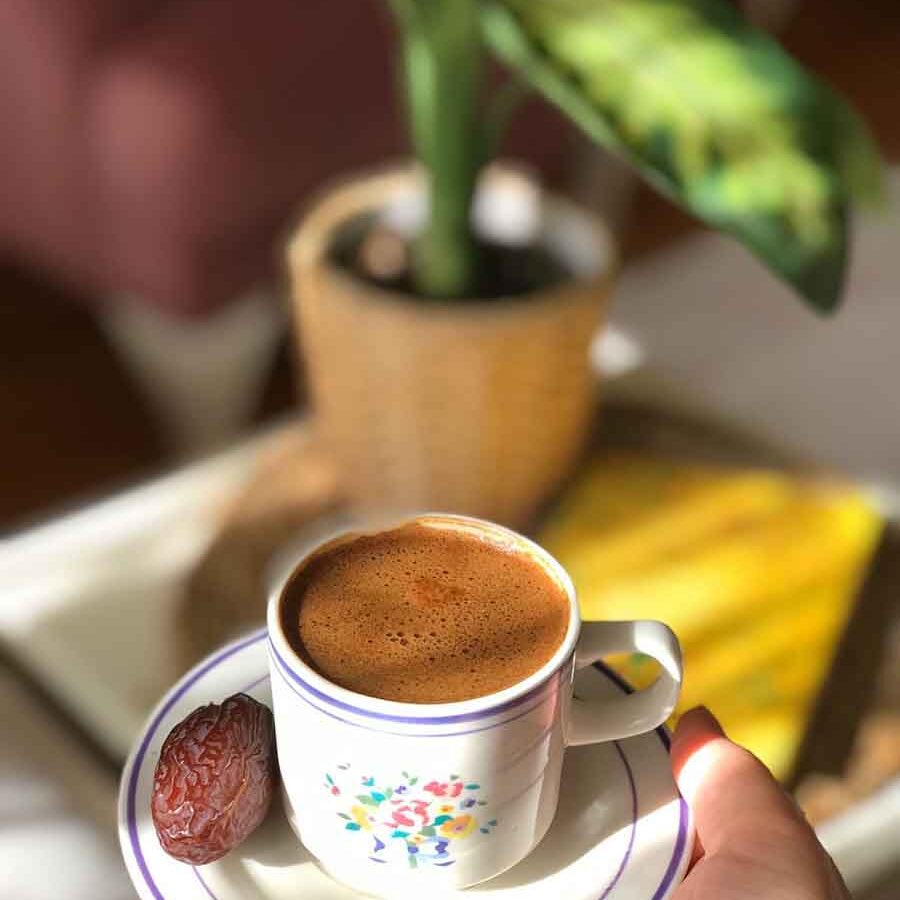Turkish Coffee and Espresso
Turkish coffee and espresso are both quite strong coffee types, but they get their strength from different factors. Turkish coffee has a bold coffee flavor thanks to the fine grounds boiling over in water. You can add sugar or various spices..
Espresso also has a bold coffee flavor. This flavor comes from the high-pressure brew. Espresso has more pure coffee flavor than Turkish coffee.
Four key distinctions brew a world apart between Turkish coffee and espresso. Let the journey begin as we explore the unique characteristics of each delicious brew…
1. Caffeine Kick: Espresso vs. Turkish Coffee
Both espresso and Turkish coffee are renowned for their intense flavors and powerful caffeine content. However, when it comes to caffeine, it’s not as simple as which one “wins.” Here’s a breakdown:
- Espresso: A single shot (30mL) contains about 60-80mg of caffeine, making it highly concentrated.
- Turkish Coffee: Despite its lower concentration, a traditional cup (120mL) holds around 80-140mg of caffeine, thanks to its longer brewing time and finer grind.
So, who wins the caffeine war?
- By volume: A cup of Turkish coffee contains more caffeine than one shot of espresso.
- By concentration: Espresso packs more caffeine per unit volume (ml), making it more potent per sip.
One cup of Turkish coffee has more caffeine than one shot of espresso.
2. Espresso vs. Turkish Coffee: A Race Against Time
Espresso: With its pressurized brewing method, espresso is ready in just 25-30 seconds. The high pressure of hot water on finely ground coffee results in a concentrated shot of coffee.
Turkish Coffee: It takes around 3-5 minutes to brew a full cup of Turkish coffee. This method allows the caffeine to gradually infuse into the water, creating a smoother and longer-lasting effect. After a few attempts, you can make a cup of Turkish coffee in less than five minutes.
Espresso machines can brew up to two cups simultaneously. Therefore, when hosting guests, preparing espresso may take longer than Turkish coffee, as you can brew coffee for multiple people at once in the same pot.
A single shot of espresso is made significantly quicker compared to brewing a cup of Turkish coffee.

3. Unlocking Coffee Perfection: The Grind Matters!
The grind of your coffee beans plays a crucial role in brewing the perfect cup, and espresso and Turkish coffee are no exceptions.
Turkish coffee is consumed without filtration. Therefore, coarse grounds may cause discomfort in the mouth.
4. A Tale of Two Coffees: Exploring Flavor and Aroma
Espresso: Imagine a bold, intense coffee experience. Espresso delivers just that, using high pressure and fine grounds to extract its rich, pure flavor. Masterfully crafted, it’s free of bitterness, showcasing the subtle nuances of exotic beans. Its heady aroma invites you to savor it in its purest form, or to create complex masterpieces like cappuccinos and lattes.
Italians recommend sipping espresso slowly, pausing between sips to fully appreciate its nuanced flavor profile. Each sip offers a different dimension of the espresso’s taste, starting with a creamy coffee sensation and gradually revealing sharper and clearer notes.
Turkish Coffee: Dive into another world of intensity with Turkish coffee. Its powder-fine grind creates a dense, unique flavor complemented by the soft touch of caramelized particles. Some prefer it plain, others enjoy the warmth of spices like cardamom or cinnamon. Remember, a clean palate is key! Drink a small glass of water before to truly savor the pure coffee experience. If you find the fine coffee grounds bothersome, allow the coffee to settle briefly, allowing the grounds to settle at the bottom of the cup.
Beyond Borders: Turkish coffee, born in Anatolia, has traveled the world, inspiring variations like Bosnian, Greek, and Russian coffees. While interpretations may differ, the core remains the same: a celebration of bold flavors and rich coffee tradition.
While espresso offers a bold and robust coffee flavor, Turkish coffee provides a milder and smoother taste experience.











